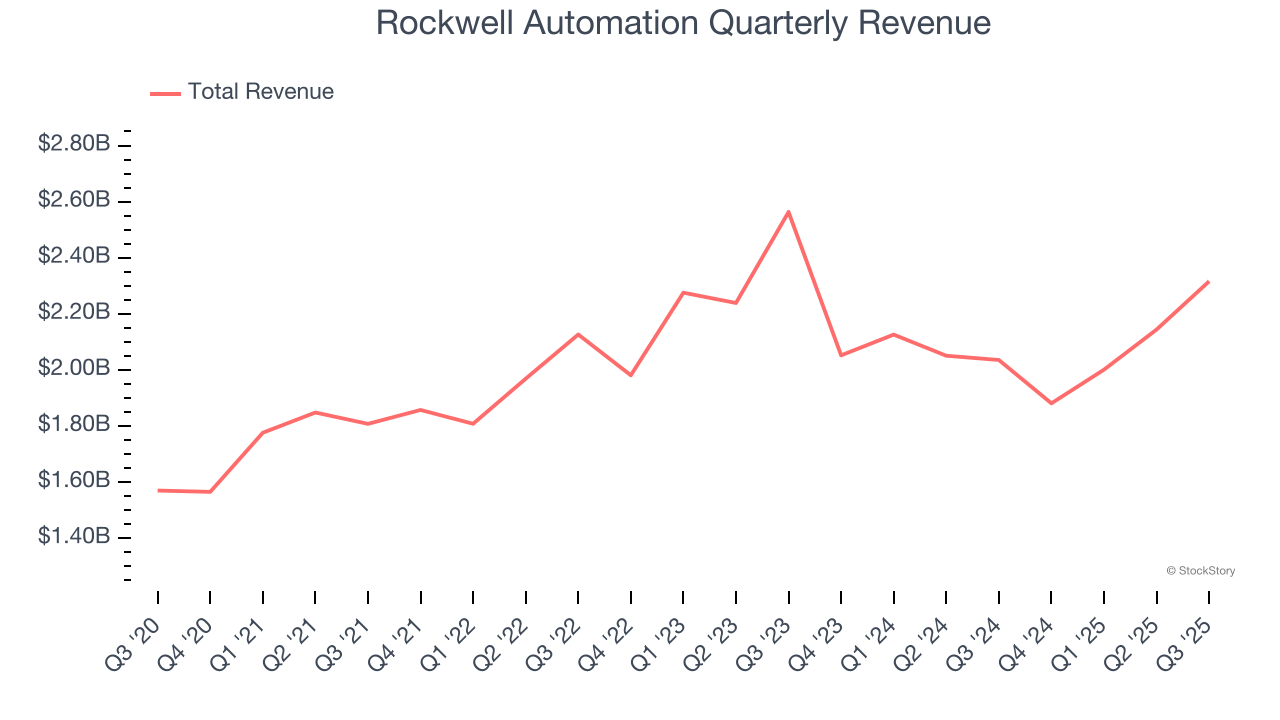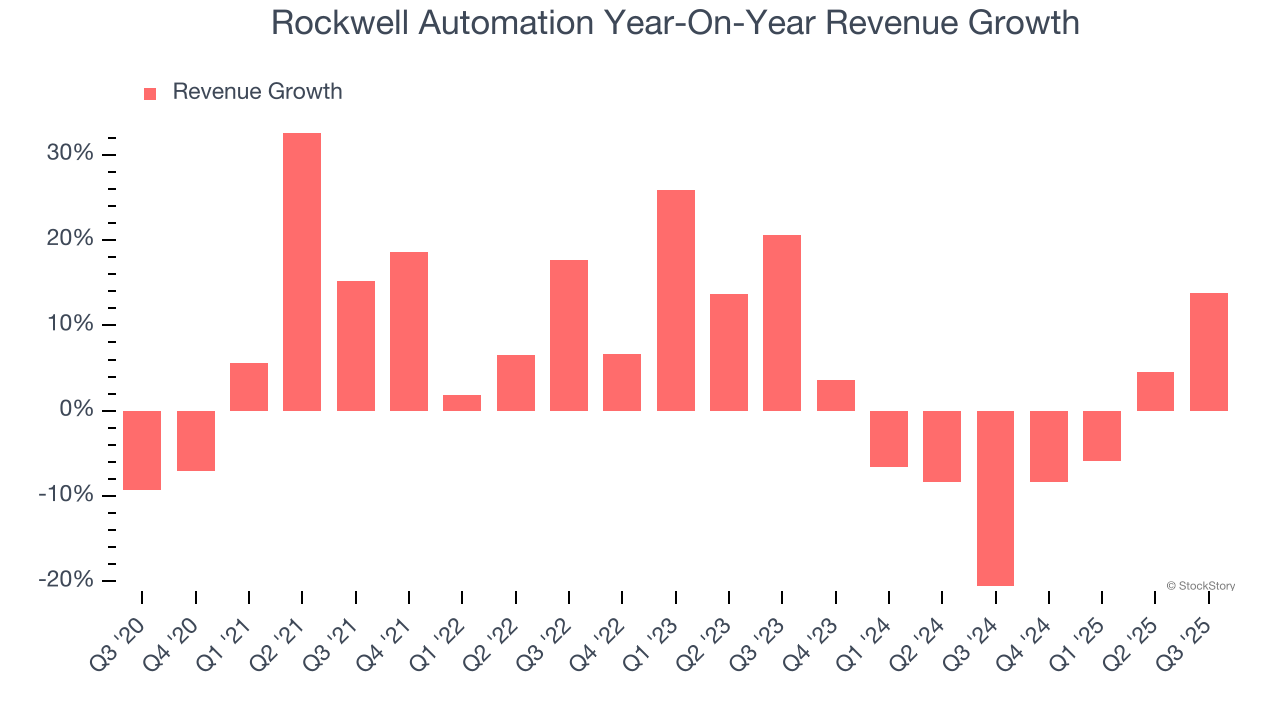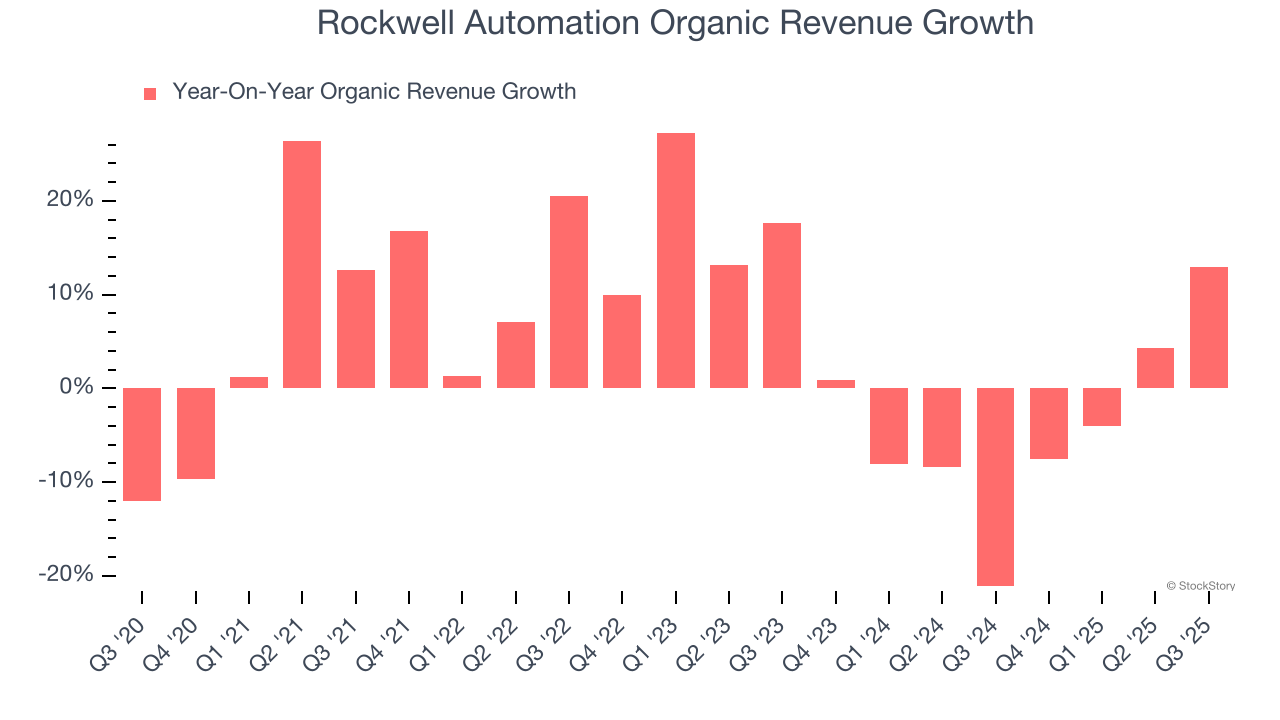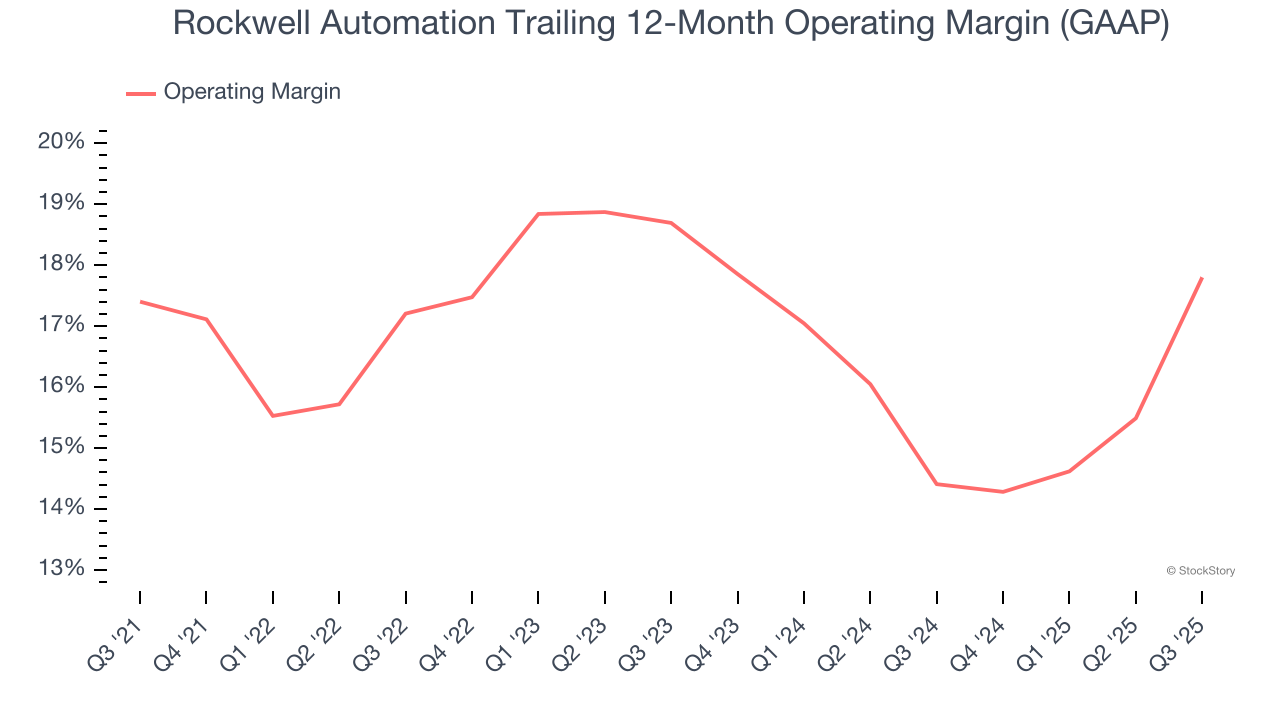
Industrials automation company Rockwell (NYSE: ROK) beat Wall Street’s revenue expectations in Q3 CY2025, with sales up 13.8% year on year to $2.32 billion. Its non-GAAP profit of $3.34 per share was 13.6% above analysts’ consensus estimates.
Is now the time to buy Rockwell Automation? Find out by accessing our full research report, it’s free for active Edge members.
Rockwell Automation (ROK) Q3 CY2025 Highlights:
- Revenue: $2.32 billion vs analyst estimates of $2.21 billion (13.8% year-on-year growth, 4.9% beat)
- Adjusted EPS: $3.34 vs analyst estimates of $2.94 (13.6% beat)
- Adjusted EBITDA: $261 million vs analyst estimates of $492.4 million (11.3% margin, 47% miss)
- Adjusted EPS guidance for the upcoming financial year 2026 is $11.70 at the midpoint, beating analyst estimates by 1.9%
- Operating Margin: 22.5%, up from 13.9% in the same quarter last year
- Free Cash Flow Margin: 17.5%, similar to the same quarter last year
- Organic Revenue rose 13% year on year vs analyst estimates of 6.9% growth (611.4 basis point beat)
- Market Capitalization: $40.77 billion
Company Overview
One of the first companies to address industrial automation, Rockwell Automation (NYSE: ROK) sells products that help customers extract more efficiency from their machinery.
Revenue Growth
A company’s long-term sales performance can indicate its overall quality. Any business can put up a good quarter or two, but the best consistently grow over the long haul. Regrettably, Rockwell Automation’s sales grew at a tepid 5.7% compounded annual growth rate over the last five years. This fell short of our benchmark for the industrials sector and is a rough starting point for our analysis.

We at StockStory place the most emphasis on long-term growth, but within industrials, a half-decade historical view may miss cycles, industry trends, or a company capitalizing on catalysts such as a new contract win or a successful product line. Rockwell Automation’s performance shows it grew in the past but relinquished its gains over the last two years, as its revenue fell by 4% annually. 
We can better understand the company’s sales dynamics by analyzing its organic revenue, which strips out one-time events like acquisitions and currency fluctuations that don’t accurately reflect its fundamentals. Over the last two years, Rockwell Automation’s organic revenue averaged 3.9% year-on-year declines. Because this number aligns with its two-year revenue growth, we can see the company’s core operations (not acquisitions and divestitures) drove most of its results. 
This quarter, Rockwell Automation reported year-on-year revenue growth of 13.8%, and its $2.32 billion of revenue exceeded Wall Street’s estimates by 4.9%.
Looking ahead, sell-side analysts expect revenue to grow 5.4% over the next 12 months. While this projection implies its newer products and services will fuel better top-line performance, it is still below average for the sector.
Microsoft, Alphabet, Coca-Cola, Monster Beverage—all began as under-the-radar growth stories riding a massive trend. We’ve identified the next one: a profitable AI semiconductor play Wall Street is still overlooking. Go here for access to our full report.
Operating Margin
Rockwell Automation’s operating margin has been trending up over the last 12 months and averaged 17.1% over the last five years. On top of that, its profitability was elite for an industrials business thanks to its efficient cost structure and economies of scale. This result isn’t surprising as its high gross margin gives it a favorable starting point.
Looking at the trend in its profitability, Rockwell Automation’s operating margin might fluctuated slightly but has generally stayed the same over the last five years. This raises questions about the company’s expense base because its revenue growth should have given it leverage on its fixed costs, resulting in better economies of scale and profitability.

This quarter, Rockwell Automation generated an operating margin profit margin of 22.5%, up 8.5 percentage points year on year. The increase was driven by stronger leverage on its cost of sales (not higher efficiency with its operating expenses), as indicated by its larger rise in gross margin.
Earnings Per Share
Revenue trends explain a company’s historical growth, but the long-term change in earnings per share (EPS) points to the profitability of that growth – for example, a company could inflate its sales through excessive spending on advertising and promotions.
Rockwell Automation’s unimpressive 6.3% annual EPS growth over the last five years aligns with its revenue performance. On the bright side, this tells us its incremental sales were profitable.

Like with revenue, we analyze EPS over a shorter period to see if we are missing a change in the business.
For Rockwell Automation, its two-year annual EPS declines of 7.2% show it’s continued to underperform. These results were bad no matter how you slice the data.
In Q3, Rockwell Automation reported adjusted EPS of $3.34, up from $2.47 in the same quarter last year. This print easily cleared analysts’ estimates, and shareholders should be content with the results. Over the next 12 months, Wall Street expects Rockwell Automation’s full-year EPS of $10.44 to grow 10.5%.
Key Takeaways from Rockwell Automation’s Q3 Results
We were impressed by how significantly Rockwell Automation blew past analysts’ organic revenue expectations this quarter. We were also excited its revenue outperformed Wall Street’s estimates by a wide margin. On the other hand, its EBITDA missed. Overall, we think this was a solid quarter with some key areas of upside. The stock traded up 5% to $381 immediately after reporting.
Sure, Rockwell Automation had a solid quarter, but if we look at the bigger picture, is this stock a buy? We think that the latest quarter is only one piece of the longer-term business quality puzzle. Quality, when combined with valuation, can help determine if the stock is a buy. We cover that in our actionable full research report which you can read here, it’s free for active Edge members.




